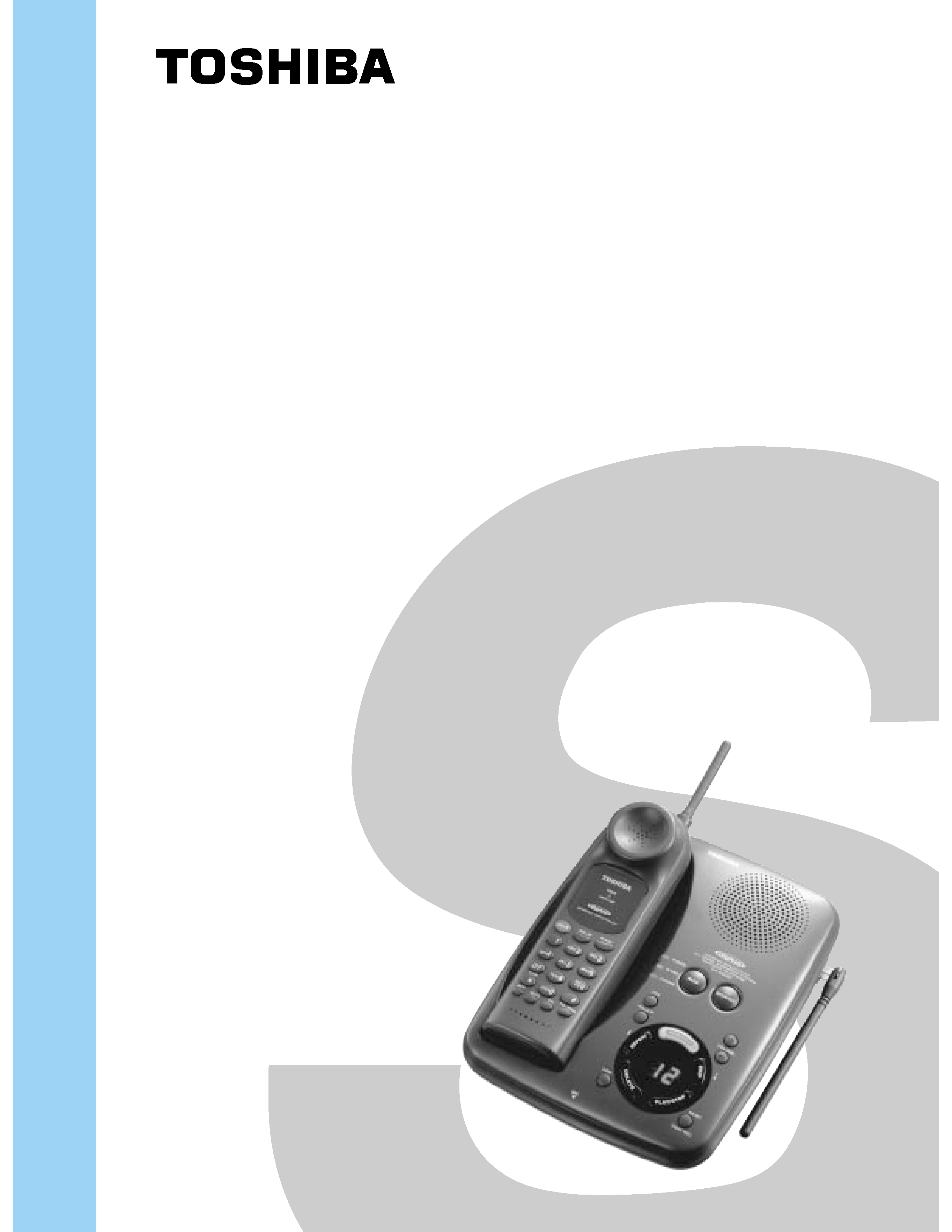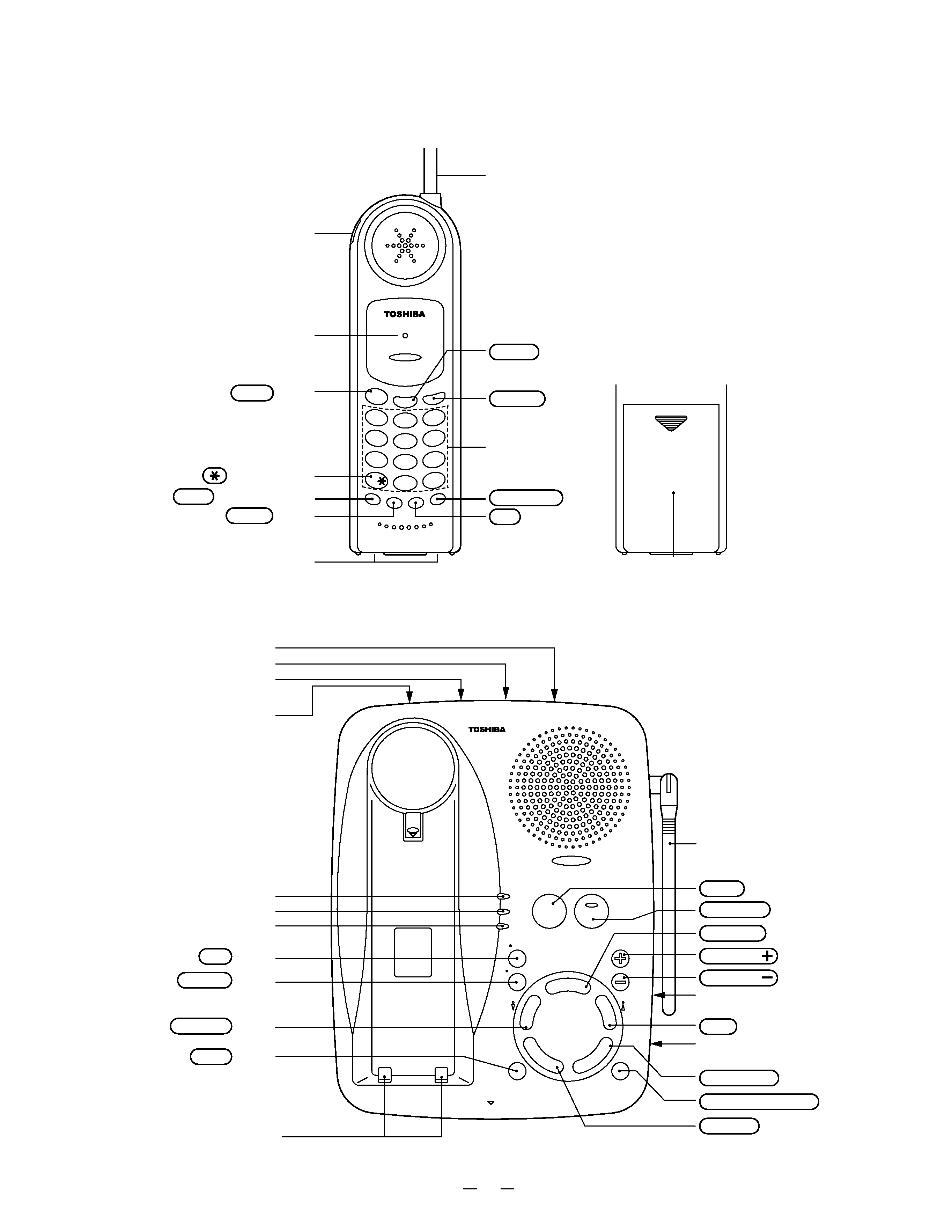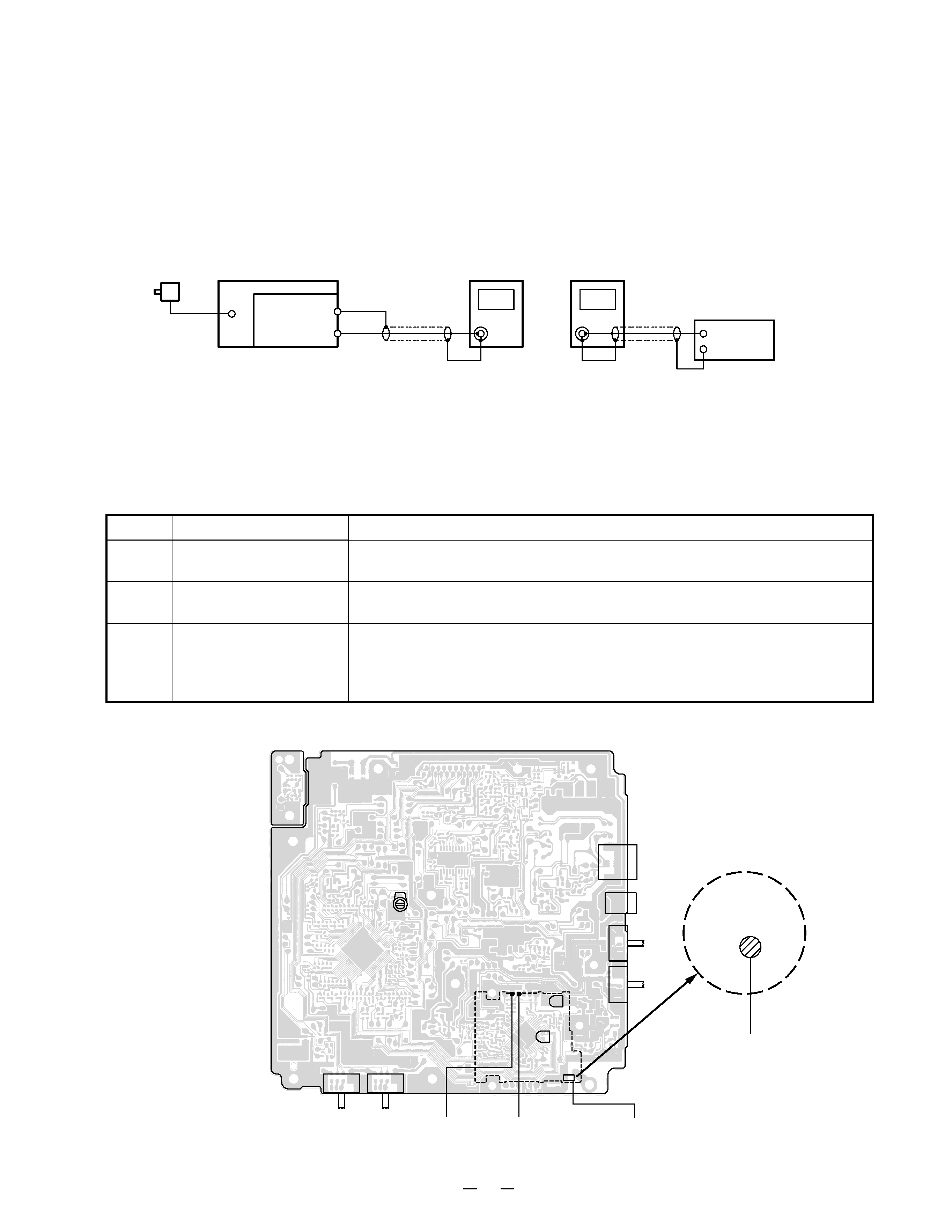
CORDLESS TELEPHONE
PUBLISHED IN JAPAN, Oct., 2000
SERVICE MANUAL
FILE NO. 2B0-200004
SX-2930

1
CONTENTS
SAFETY PRECAUTIONS ............................................................................................................ 1
OPERATING CONTROLS ........................................................................................................... 2
ALIGNMENT PROCEDURE ........................................................................................................ 3
BLOCK DIAGRAMS ..................................................................................................................... 5
SCHEMATIC DIAGRAMS ............................................................................................................ 7
TROUBLESHOOTING HINTS ................................................................................................... 13
IC AND TRANSISTOR VOLTAGE CHART ............................................................................... 21
SEMICONDUCTOR LEAD IDENTIFICATION ........................................................................... 29
ELECTRICAL PARTS LOCATION ............................................................................................. 32
WIRING DIAGRAMS .................................................................................................................35
EXPLODED VIEW AND MECHANICAL PARTS LIST ............................................................... 38
PARTS LIST ............................................................................................................................... 42
ASSEMBLY PARTS LIST .......................................................................................................... 61
SPECIFICATIONS ..................................................................................................................... 62
SAFETY PRECAUTIONS
Before returning any models to the customer, a safety check of the entire instrument should be made.
The service technician must be sure that no protective device built into the instrument by the manufacture
has become defective or inadvertently degraded during servicing.
1.WARNING:
Alterations of the design or circuitry of these models should not be made.
Any design changes or additions such as, but not limited to, circuit modifications, auxiliary speaker
jacks, switches, grounding, active or passive circuitry, etc. may alter the safety characteristics of these
models and potentially create a hazardous situation for the user.
Any design alterations or additions will void the manufacturer's warranty and will further relieve the
manufacturer of responsibility for personal injury or property damage resulting therefrom.
2.PRODUCT SAFETY NOTICE
Many electrical and mechanical parts in this chassis have special characteristics. These characteristics
often pass unnoticed and the protection afforded by them cannot necessarily be obtained by using
replacement components rated for higher voltage, wattage, etc. Replacement parts that have these
special safety characteristics are identified in this manual and its supplements; electrical components
having such features are indentified by a
in the schematic diagram and the parts list. Before
replacing any of these components, read the parts list in this manual carefully. The use of substitute
replacement parts that do not have the same safety characteristics as specified in the parts list may
create shock, fire or other hazards.

2
OPERATING CONTROLS
HANDSET CONTROLS AND FUNCTIONS
BASE UNIT CONTROLS AND FUNCTIONS
TALK Button
(TONE) Button
MEM (Memory) Button
MUTE Button
PIN Button
CLOCK Button
REPEAT Button
OGM Button
Charging contact
PULSE/TONE Switch
RINGER OFF-ON Switch
DC IN 9V Jack
TEL LINE Jack
Antenna
POWER
PAGE
SPEAKER
IN USE
CHARGE
PIN
CLOCK
OGM
MIC
MEMO
2WAY REC
VOLUME
CHARGE LED
IN USE LED
POWER LED
PAGE Button
SPEAKER Button
ANSWER Button
SKIP Button
PLAY/STOP Button
MEMO/2WAY REC Button
DELETE Button
VOLUME
Button
VOLUME
Button
Charging Contact
VOL/RING Button
CH (channel)Button
Antenna
FLASH Button
RDL/P (Redial/Pause)Button
Dialpad
Rechargeable
Battery Pack(back)
TALK/BATT LOW LED
Headset jack
RING TIME SW (2 / 4 / TS)
REC TIME SW (ANN / 4 / 1)
TALK
TALK
ABC
2
JKL
5
TUV
8
OPER
TONE
MEM
MUTE
CH
VOL/RING
RLD/P
FLASH
0
DEF
3
MNO
6
WX
YZ
PQ
RS
9
#
GHI
4
7
1
BATT LOW
SPREAD SPECTRUM
SPREAD SPECTRUM
digital
digital
R
E
P
E
A
T
ANSWER
S
K
IP
PLA
Y/
S
T
O
P
D
E
LE
TE
SX-2930
ALL DIGITAL ANSWERING SYSTEM
CORDLESS TELEPHONE

3
ALIGNMENT PROCEDURE
Base Unit
Transmitter Section
Test Equipment Required and Connections
Preset
a) Set T/P SW to pulse mode.
b) Turn on AC power while the "PAGE" key is being depressed.
c) Before alignment, be sure to remove solder on the pattern of RF PCB (refer to the illustration below).
Alignment Procedure
Alignment Point Location on Base Main PCB and Base RF PCB
Base RF PCB
Base Main PCB
· Spectrum Analyzer
· Oscilloscope
Test Point
(J301)
RF PCB
AC Adapter
(120V 60Hz)
Base Unit
J4
Spectrum Analyzer
Oscilloscope
Handset
DET terminal
GND
step
1
2
3
Adjustment
CT1
(Frequency Adjust)
RT301
(Power Adjust)
RT302
(Deviation Adjust)
Remarks
Connect the Spectrum Analyzer to test point (J301).
Adjust CT1 so that the frequency is 913.92 MHz.
Adjust RT301 so that the power instructions of the Spectrum analyzer
reaches +10.0 dBm.
Press the PAGE key one.
Set the Handset to the test mode (refer to the next page) and press the "4"
key. Connect the oscilloscope to DET terminal of the Handset.
Adjust RT302 to indicate 230 mVp-p on the oscilloscope.
Test Point
DET terminal
GND
Remove solder
before alignment
CT1
RT302
RT301
J4

4
Handset Unit
Transmitter Section
Test Equipment Required and Connections
Alignment Point Location on Handset Main PCB and Handset RF PCB
Preset
a) Turn the power ON (Connect battery) while depressing " " and "#" keys.
b) Press "1" key.
c) Before alignment, be sure to remove solder on the pattern of RF PCB (refer to the illustration below).
Alignment Procedure
Handset
RF PCB
Handset Main PCB
· Spectrum Analyzer
· FM Deviation Meter
Test Point
(J801)
Handset Unit
Spectrum Analyzer
BASE UNIT
Oscilloscope
DET terminal
GND
step
1
2
3
Adjustment
CT601
(Frequency Adjust)
RT801
(Power Adjust)
RT802
(Deviation Adjust)
Remarks
Connect the Spectrum Analyzer to test point (J801).
Adjust CT601 so that the frequency is 913.92 MHz.
Adjust RT801 so that the power instructions of the Spectrum analyzer
reaches +10.0 dBm.
Press the "2" key.
Set the Base unit to the test mode (refer to the previous page) and press the
PAGE key 3 times.
Connect the oscilloscope to DET terminal of the Base unit.
Adjust RT802 to indicate 230 mVp-p on the oscilloscope.
Test Point
DET terminal
GND
Remove solder
before alignment
Alignment Point Location on Handset Main PCB and Handset RF PCB
RT801
J801
RT802
CT601
